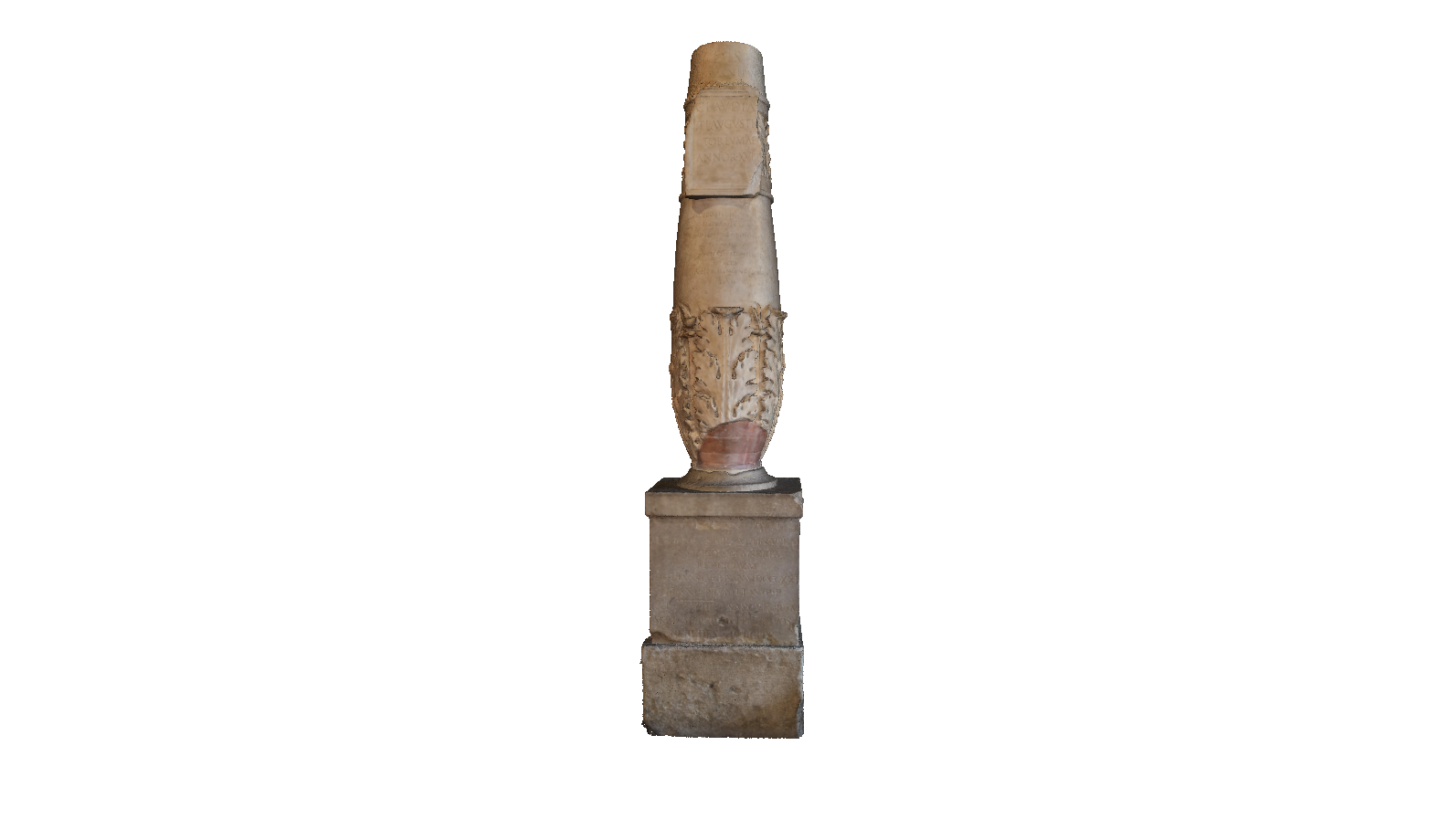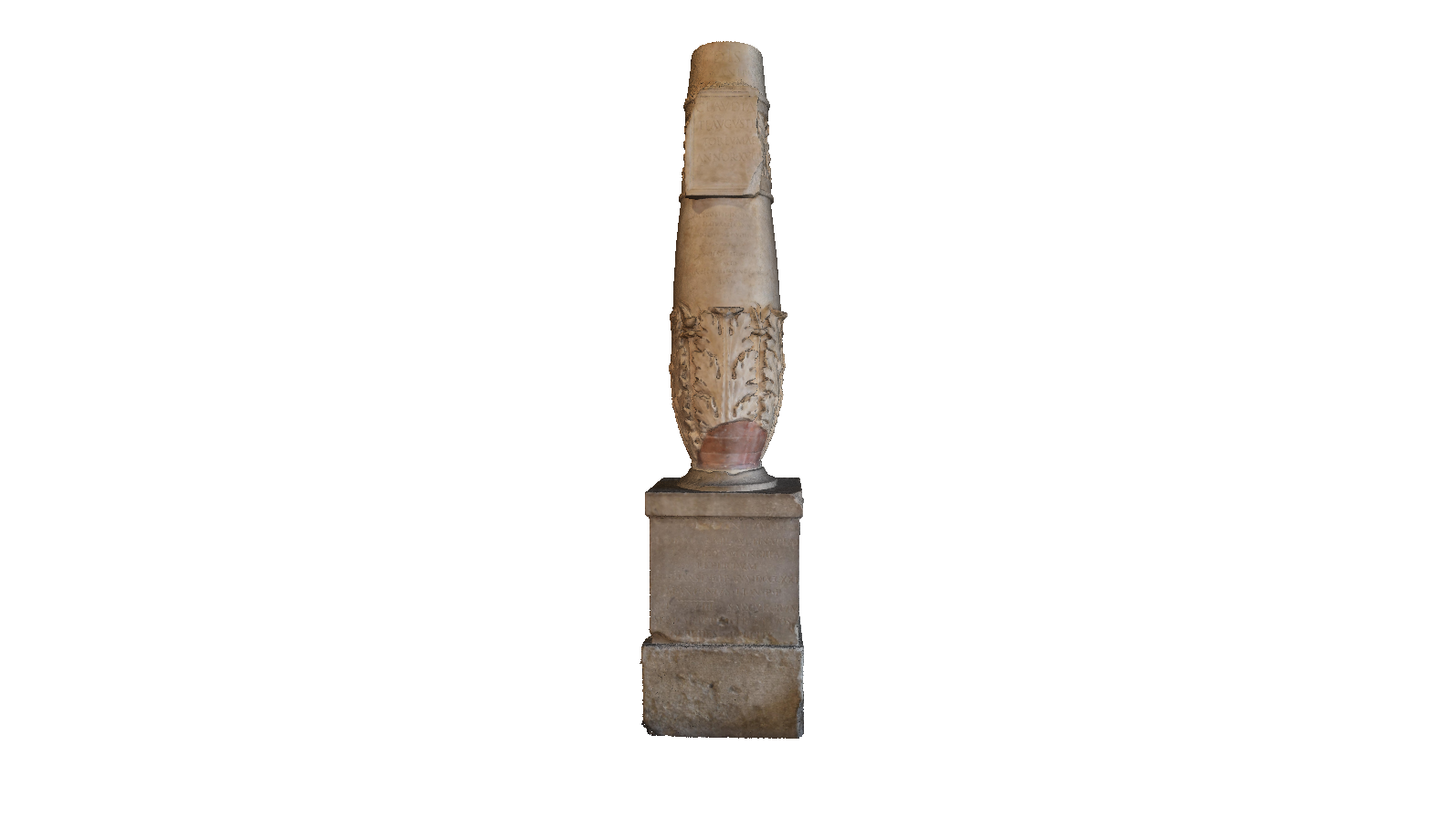Description
Click on the image to go full screen
This monument, made of white Lunense marble was found in Mandria (Padua) in 1821. It belonged to a 19-year-old young woman, a gymnast and juggler, named Claudia Toreuma, a freedwoman (freed slave) of the emperor Tiberius Claudius Augustus.
The graceful monument consists of a tapered cippus, decorated in the lower part with acanthus leaves, a frequent element in funerary contexts, and flowering stems among which small animals can be glimpsed: in a nest three small birds wait to be fed by their two parents, who fly higher to catch a dragonfly.
In the upper part, the cartouche, the space with the invocation to the Déi Mani (“Dis Manibus”) and the identity of the girl is well emphasised: “Claudia[e]/ Ti(beri) Augusti l(ibertae)/ Toreumae,/ ann(orum) XVIIII” which means “To Claudia Toreuma, freedwoman of Tiberius [Claudius] Augustus, aged nineteen”. Below it is inscribed a message in verse that reads: “Hac ego bis denos nondum/ matura per annos/ condor humo, multis nota,/ Toreuma, iocis,/ exiguo vitae spatio feliciter/ acto,/ effugi crimen, longa senecta/ tuum”, which means “I, Toreuma, known for my performances before I turned twenty, I am buried here. Having happily passed this brief period of life, I have fled to your insult, dull old age”. The reference is to the poetic ideal that made death in youth sweet by recognising it as salvation from old age, a theme very much present in ancient literature.
This monument, due to its form, its elegance and its language, finds comparisons in the Greek world and, in Italy, in Aquileia, but represents a unicum in Padua. Underneath the marble element, a trachyte base was created in the 19th century, while a stone cist with a glass urn inside to contain Claudia's cremated remains was found together with the monument.

